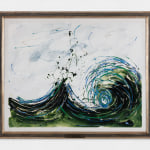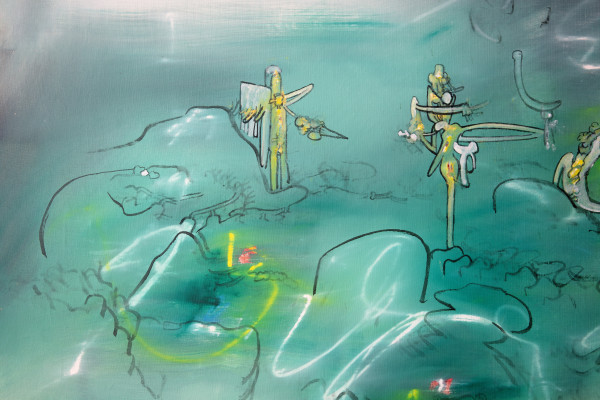-
Biography
Mario Schifano (Khoms, Libya 1934 - Rome, Italy 1998)
Born in Libya in 1934, after the end of the Second World War, he moved to Rome. Here, not interested in school, he began to work in the restoration of ceramics, a trade learned from his father, the archaeologist responsible for the Leptis Magna excavation site. After an apprenticeship at the Etruscan Museum of Villa Giulia, he made his debut in 1960 with an exhibition at the La Salita gallery in Rome, presented by Pierre Restany.His first productions were bold monochrome canvases with paper strips applied with glue and stencils. His work was critically acclaimed, was featured in several exhibitions, first in Italy and later in the USA. In the early 1960s, Schifano's interest turned mainly to the urban landscape of Rome. He began to use coloured plexiglass, corporate logos and billboards layered over each other to explore popular street culture.
In his artworks, he explored the history of Italian art, focused on Futurism, until he exhibited his first Paesaggio Anemico at the Venice Biennale in 1964. He soon began directing 16mm films, inspired by the French director and screenwriter Jean-Luc Goddard's principles of improvisation.
In the late 1960s, he joined international group exhibitions and collaborated with rock groups. During this time, he developed a strong sense of civic duty. In response to youth protests, he made several politically charged artworks.
In the 1970s, he began the series of Paesaggi televisivi, where he transferred television images to the canvas with a photographic emulsion technique. In the following decade, Schifano concentrated on nature; during this time, his work was characterised by a broad array of colours. His artistic turning point arrived in the 1990s, thanks to new technology which allowed him to experiment with and manipulate images digitally before transferring them onto canvas.
In 1990, he inaugurated the reopening of the Palazzo delle Esposizioni in Rome with Divulgare, a presentation of extremely large artworks developed through the latest digital technology. These large paintings depicted new satellite images, environmental issues and war.
He dedicated his final artist productions to social causes, filming and photographing trips and humanitarian and protest missions.
He died in Rome in 1998.
Copyright the artist. Photo UniCredit Group (Sebastiano Pellion di Persano)
-
Works
Mario Schifano Italian, 1934-1998
Senza titolo, 1984Varnish and acrylic on canvas / Smalto e acrilico su tela / Lack und Acryl auf Leinwand47 1/4 x 63 in
120 x 160 cmUniCredit S.p.A.© MARIO SCHIFANO, by SIAE 2025Photo: UniCredit Group (Sebastiano Pellion di Persano)Exhibitions-

Modern Times
Online exhibition curated by Flavio Favelli, contemporary artist that with his artworks combine conceptual and pop art 16 Jul 2025View Exhibition -

Inversamente
Inaugural online exhibition curated by Bartolomeo Pietromarchi, former Director of MAXXI Arte – MAXXI, the National Museum of 21st Century Art 8 Nov 2023Inversamente is a journey through aniconic art between the early 1960s and the beginning of the new millennium. An undulating journey that places in dialogue the works of some of...View Exhibition
Join our mailing list
* denotes required fields
In order to respond to your enquiry, we will process the personal data you have supplied in accordance with our privacy policy.








